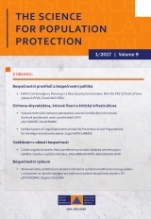BASE TRANSCEIVER STATIONS OF MOBILE PHONES AND RISK ASSESSMENT IN RELATION TO POPULATION PROTECTION
DOI:
https://doi.org/10.71934/Keywords:
Base transceiver station, health risks, mobile net, non-ionizing electromagnetic field, non-ionizing radiation, radiofrequency radiationAbstract
Expansion of wireless networks mobile phones increase the number of base
transmission stations with antenna systems usually located on the school roof buildings or
nearby. Antenna systems are a source of non-ionizing electromagnetic fields, which may
represent an increased health risk, especially for children and young people due to their higher
sensibility, and hence vulnerability. Therefore the spectrum analyser Spectran HF-6080 was
used for measuring of electric field strength inside the selected educational establishments in
spaces, where children and young people are staying commonly. The measured values were
according to expectations distinctly under the actual valid action level of electric field strength,
which respects thermal effects of non-ionizing radiation exclusively. That is why the health risk
is totally negligible in accordance with this procedure of risk assessment. If the precautionary
principle has been taken into account and the biological effects of non-ionizing radiation have
been included, in 11 out of 15 educational establishments has been proved the unacceptable
risk
Downloads
Published
Issue
Section
License
Copyright (c) 2025 The Science For Population Protection

This work is licensed under a Creative Commons Attribution-NonCommercial-NoDerivatives 4.0 International License.
Published under license


